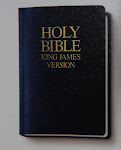Kirtland has several sacred historical sites for our church, The Church of Jesus Christ of Latter-day Saints. While there we enjoyed talking to senior missionaries serving missions similar to the one we just completed.
Below are some pictures from those sites and a brief summary of the Church events that occurred there. Besides many faithful members that came there shortly after the Church was organized, often at great sacrifice, we also learned about three remarkable families that joined the Church there and gave much of their time and means to help build the Church. The three families were, the Whitneys, the Morleys, and the Johnsons.
This state marker below summarizes what happened in Kirtland. I have retyped it for easier reading.
Mormon Community
Kirtland in the 1830s became an early gathering place and headquarters of The Church of Jesus Christ of Latter-day Saints, which had been organized under divine inspiration by Joseph Smith in western New York in 1830. Here the Mormons, as they are known outside the faith, created a religious community and introduced doctrinal concepts, organizational programs, and social practices that have been central to the religion ever since. The Kirtland Temple, dedicated in 1836, was the spiritual center of the faith. Internal dissension and external persecution arose largely from the distinctive features of the religion and weakened the Mormon community in Kirtland. In 1838, the majority of the Mormons here followed Smiths westward to Missouri, Illinois, and eventually Utah.
When Joseph Smith and Emma first came to Kirtland the Whitneys, who were successful business owners, invited them to live with them above their store. Joseph and Emma stayed there for 6 months. The Knights also owned the sawmill (right) and ashery (left) below.
The sawmill was important because it was here that the lumber was milled for the Kirtland Temple.
The beautiful woodworking on the pulpits was also done here.
The ashery provided a nice income for the Whitneys. Ash from hardwood trees was put into large vats and water was added.
The ash was filtered with water once or twice and was then used to make soap.
Or ash was heated in large evaporation pots. This solidified the ash, which could then be sold.
The Whitneys donated all money they collected from selling this highly refined ash to the Church and eventually sold their store, sawmill, and ashery and moved with the Saints to Illinois.
After living with the Whitneys for 6 months Joseph and Emma were invited by Isaac and Lucy Morley to move onto their farm. They were early converts to The Church of Jesus Christ of Latter-day Saints.
A small home was built where Joseph worked on a translation of the Bible and where he received numerous revelations. While living in the home, Emma gave birth to twins, who died soon after birth. The Smiths stayed on the property until the Morleys sold it in the fall of 1831, at Joseph’s request, and moved to Missouri to be Church leaders there.
Log Schoolhouse
On the top of this hill, the Morley family built a log schoolhouse for their seven children and for the children of friends and neighbors living on adjoining farms.
In the Morley schoolhouse, the Latter-day Saints held some of their earliest meetings in Kirtland, including the fourth conference of the Church, which convened here 3-6 June 1831. In meetings accompanied by profound spiritual manifestations, the first high priests in the Church were ordained. Missionaries were also called to go to Missouri.
The Smiths then moved to Hiram, Ohio, where they lived in the home of John and Alice (Elsa) Johnson. The farmhouse below is 85% original.
John and Alice Johnson and most of their congregation, led by Sidney Rigdon, joined the Mormon Church shortly after Joseph and Emma came to Ohio. Hiram is about 27 miles south of Kirtland. The Johnsons willingly made room for the Smiths, giving them their bedroom and provided this room (below) for Joseph to run the affairs of the Church. Many significant and sacred events occurred in this room including many revelations now included in the Doctrine and Covenants.
During this time the Whitneys built themselves a new home across from their store.
This room shows the summer kitchen where canning and cooking was done in the summer to prevent heating the entire home. I like the idea of two kitchens.
The Whitneys invited Joseph and Emma to stay in their home above their store, which they did, so Joseph could oversee the building of the Kirtland Temple.
The sandstone quarried here (pictures below) was used in the construction of the Kirtland Temple. Workers spend long days cutting stone, drying it in the sun, then driving stone-loaded wagons to the temple site, two miles north. The laborers who worked in the quarry and at the Temple construction site did so with great convictions and sacrifice. Joseph Smith, founder and first church president, served as quarry foreman. The temple was begun in 1833 and completed in 1836.
This concluded our tour of Kirtland. We were thankful to have the opportunity to visit these historic sites and for the inspiration we received from the example of faithful Saints that lived here.




































































.jpg)

